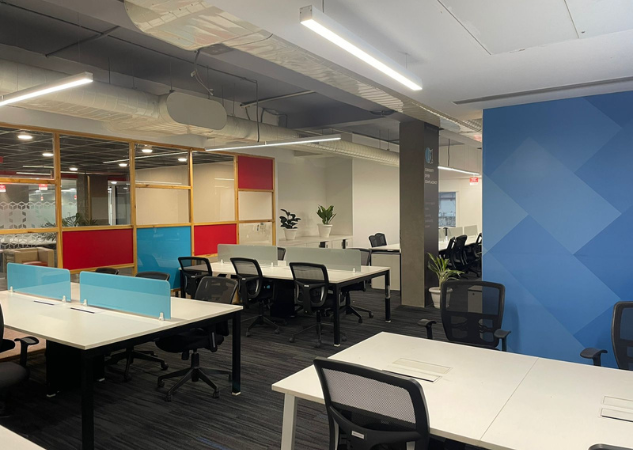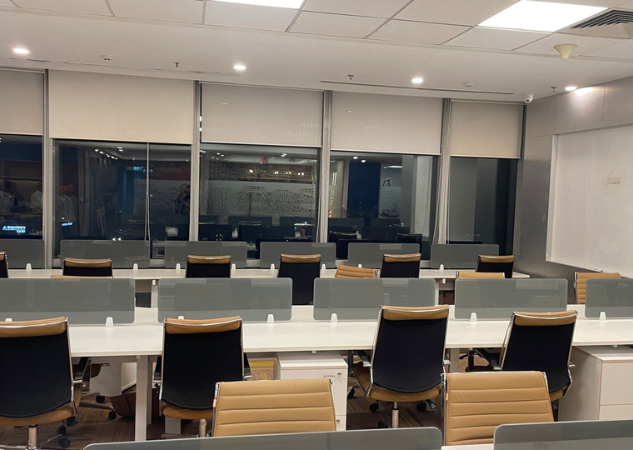Effective leadership and management are critical for driving organizational success, yet they represent distinct skill sets and approaches. Leadership focuses on inspiring and guiding people toward a vision, while management emphasizes organizing and executing plans to achieve specific goals. This blog delves into the nuances of these roles, exploring their unique functions, overlapping areas, and the key traits that define each. Whether you’re a seasoned professional or an aspiring leader, understanding the differences can elevate your ability to influence and achieve. Let’s embark on a comprehensive comparison to uncover what sets leadership and management apart.
💡 Are you looking for Coworking space in Gurgaon, Noida or Delhi? We are just a call away.
Call Now: 08999 828282
10 Best Insights on Comprehensive Comparison Between Leadership and Management
- Definitions of Leadership and Management
- Core Focus
- Roles and Responsibilities
- Skills Required
- Theories Behind Leadership and Management
- Styles and Approaches
- Examples in Action
- Similarities Between Leadership and Management
- Challenges in Leadership and Management
- Impact on Organizational Success
1. Definitions of Leadership and Management
Leadership is about inspiring and guiding individuals or teams toward a vision or goal. In contrast, management focuses on planning, organizing, and overseeing tasks to achieve specific objectives. Leadership and management definitions highlight the visionary versus operational nature of these roles.

2. Core Focus
The primary difference between leadership and management lies in their focus. Leadership is people-oriented and emphasizes motivating and developing individuals. Management, however, is task-oriented and ensures processes run smoothly.
3. Roles and Responsibilities
Leadership roles often involve setting a direction, encouraging innovation, and influencing others. On the other hand, management roles focus on delegating tasks, monitoring progress, and maintaining structure. Both leadership and management roles are essential for an organization’s success.
Also Read: Best Ways You Can Use AI to 10x Your Leadership Skills
4. Skills Required
Leadership skills include emotional intelligence, effective communication, and the ability to inspire others. Management skills revolve around technical proficiency, organization, and decision-making. Understanding leadership skills vs management skills can help professionals develop both.
5. Theories Behind Leadership and Management
Various leadership and management theories provide insights into their functions. For example, transformational leadership focuses on inspiring change, while transactional management emphasizes performance and compliance.
6. Styles and Approaches
Leadership vs management styles differ significantly. Leaders often adopt a participative or transformational style, focusing on collaboration and innovation. Managers typically use an authoritative or procedural style to ensure efficiency and adherence to rules.
7. Examples in Action
Leadership vs management examples can illustrate their distinctions. A leader might motivate a team to embrace a new vision, while a manager ensures deadlines and budgets are met. Both roles complement each other in achieving the organization’s goals.
8. Similarities Between Leadership and Management
Despite their differences, leadership and management share similarities. Both involve influencing others, decision-making, and working toward achieving objectives. Recognizing leadership and management similarities helps integrate their functions effectively.
💡 Are you looking for Coworking space in Gurgaon, Noida or Delhi? We are just a call away.
Call Now: 08999 828282
9. Challenges in Leadership and Management
Leaders face challenges like resistance to change and inspiring diverse teams. Managers often deal with issues like resource constraints and process optimization. Balancing leadership and management helps address these challenges comprehensively.
10. Impact on Organizational Success
Both leadership and management are vital for organizational success. Leadership drives innovation and vision, while management ensures stability and execution. Together, they create a balanced approach to achieving long-term goals.
Leadership and management are two sides of the same coin, both essential for organizational growth and success. While leadership inspires vision and drives change, management ensures stability and operational efficiency. Striking the right balance between the two can transform teams and businesses alike. If you’re looking for a workspace that fosters both leadership and collaboration, explore The Office Pass (TOP). With modern amenities and a vibrant community, TOP is the perfect environment to elevate your team’s potential. Reach out at 08999 828282 to book your space today!
FREQUENTLY ASKED QUESTIONS (FAQS):
Question: What is the main difference between leadership and management?
Answer: The main difference between leadership and management is their focus. Leadership is about inspiring and guiding people toward a vision, while management focuses on planning, organizing, and ensuring tasks are completed efficiently.
Question: How are leadership and management defined?
Answer: Leadership is the ability to influence and motivate others to achieve common goals. Management, on the other hand, involves coordinating resources and processes to meet objectives effectively.
Question: Why is it important to understand leadership and management theories?
Answer: Understanding leadership and management theories helps identify the best approaches to motivate teams, solve problems, and achieve goals. These theories offer practical strategies for different workplace situations.
Question: What roles do leadership and management play in an organization?
Answer: Leadership plays a role in setting a vision, inspiring innovation, and driving change. Management ensures that daily operations run smoothly by organizing resources, setting goals, and monitoring progress.
Question: How can you compare leadership vs management with examples?
Answer: An example of leadership is a CEO inspiring employees to embrace a new company mission. A management example is a project manager assigning tasks and ensuring deadlines are met. Leadership focuses on vision, while management focuses on execution.
Question: What are the key differences in skills between leadership and management?
Answer: Leadership skills include emotional intelligence, vision-setting, and communication. Management skills focus on planning, problem-solving, and organization. Both are important but serve different purposes.
Question: How do leadership styles differ from management styles?
Answer: Leadership styles, like transformational or servant leadership, focus on influencing and motivating. Management styles, such as authoritarian or participative, focus on how tasks and resources are managed within teams.
Question: Are there similarities between leadership and management?
Answer: Yes, both leadership and management aim to achieve organizational goals. Both require decision-making, communication, and the ability to work with teams, although their approaches differ.
Question: Can a person be both a good leader and manager?
Answer: Yes, a person can be both a good leader and manager. Combining leadership and management skills allows someone to inspire a team while efficiently managing resources and processes.
Question: Why is comparing leadership and management important for career growth?
Answer: Comparing leadership and management helps individuals identify which skills they need to develop. Understanding both roles can enhance career growth by making a person more versatile and effective in any position.








